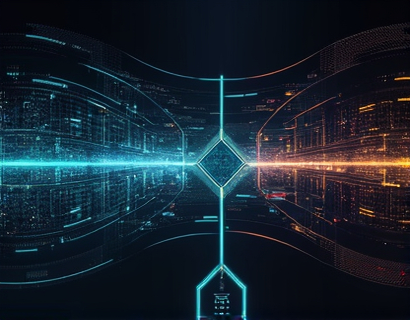Streamlining Inspection Management: Innovative Software Solutions for Enhanced Compliance and Efficiency
In today's fast-paced business environment, maintaining high standards of compliance and operational efficiency is crucial for success. One area that significantly impacts both compliance and efficiency is inspection management. Inspections are essential for ensuring that products, processes, and facilities meet regulatory standards and organizational requirements. However, traditional inspection management processes can be cumbersome, time-consuming, and prone to errors. This article explores how innovative software solutions are transforming inspection management, offering businesses a pathway to streamlined tasks, enhanced compliance, and boosted efficiency.
Understanding the Challenges of Traditional Inspection Management
Traditional inspection management involves manual documentation, paper-based reporting, and disjointed communication between teams. These methods not only increase the risk of human error but also consume valuable time and resources. Inspection schedules are often managed through spreadsheets, which lack real-time tracking and reporting capabilities. Compliance with regulatory standards becomes a challenge when documentation is scattered and difficult to audit. Moreover, the lack of integration between different inspection tools and systems leads to siloed data, making it hard to gain a comprehensive view of the inspection lifecycle.
How Software Solutions Revolutionize Inspection Management
Innovative software solutions are designed to address these challenges by providing a centralized platform for managing all inspection-related tasks. These solutions offer a range of features that streamline processes, ensure compliance, and enhance overall efficiency. By leveraging advanced technologies such as cloud computing, artificial intelligence, and the Internet of Things (IoT), these platforms provide businesses with powerful tools to optimize their inspection management practices.
Centralized Inspection Data Management
One of the key benefits of using software for inspection management is the centralization of data. All inspection records, reports, and documentation are stored in a single, accessible location. This eliminates the need for multiple files and folders, reducing the risk of data loss and ensuring that information is always up-to-date. Centralized data management also facilitates easier access and sharing among team members, improving collaboration and decision-making.
Automated Workflow and Task Management
Automation is a game-changer in inspection management. Software solutions can automate routine tasks such as scheduling inspections, assigning tasks to team members, and tracking progress. This reduces manual effort and minimizes the potential for human error. Automated workflows ensure that inspections are conducted on time and that follow-up actions are taken promptly. For instance, once an inspection is completed, the system can automatically generate a report and send notifications to relevant stakeholders, ensuring that everyone is informed and accountable.
Real-Time Monitoring and Reporting
Real-time monitoring and reporting are critical for maintaining compliance and making data-driven decisions. Advanced software platforms provide dashboards and analytics tools that offer insights into inspection activities, trends, and potential issues. Managers can monitor the status of ongoing inspections, view historical data, and generate custom reports with just a few clicks. This level of visibility helps in identifying areas that require immediate attention and in demonstrating compliance to regulatory bodies.
Enhanced Compliance and Regulatory Adherence
Compliance with industry regulations and standards is a non-negotiable aspect of business operations. Software solutions for inspection management include built-in compliance modules that help organizations stay up-to-date with changing regulations. These modules can be customized to align with specific industry standards, such as ISO, OSHA, or GDPR. The software ensures that all inspection activities are conducted in accordance with these standards, reducing the risk of non-compliance and associated penalties. Additionally, the system can generate audit trails and documentation required for regulatory inspections, simplifying the audit process.
Improved Accuracy and Quality Control
Accuracy is paramount in inspection management. Software solutions incorporate quality control measures to ensure that inspections are thorough and consistent. Features such as checklists, standardized templates, and pre-defined criteria help inspectors follow established protocols, reducing the likelihood of oversights. Some advanced systems even use AI to analyze inspection data and identify patterns or anomalies, providing insights that can improve inspection quality and process efficiency.
Integration with Other Business Systems
Seamless integration with other business systems is another significant advantage of modern inspection management software. These platforms can integrate with ERP, CRM, and asset management systems, ensuring a holistic view of business operations. Integration enables the flow of data between different systems, reducing manual data entry and ensuring consistency. For example, inspection results can be automatically updated in an ERP system, affecting inventory levels or maintenance schedules, thereby optimizing resource allocation and operational efficiency.
Mobile Accessibility and Field Inspections
In today’s mobile-first world, the ability to manage inspections on-the-go is invaluable. Software solutions offer mobile applications that allow inspectors to perform tasks remotely. Inspectors can access inspection forms, upload photos, and enter data directly from their mobile devices, even in remote locations. This not only increases productivity but also ensures that inspections are conducted promptly, reducing delays and improving response times.
Scalability and Flexibility
As businesses grow and evolve, their inspection management needs change. Innovative software solutions are designed to be scalable and flexible, accommodating the unique requirements of different organizations. Whether a business is a small startup or a large enterprise, the software can be tailored to fit its specific inspection processes and workflows. This flexibility ensures that the solution remains relevant and effective as the business grows.
Case Studies and Success Stories
Several organizations have successfully implemented inspection management software, achieving significant improvements in compliance and efficiency. For instance, a manufacturing company reduced inspection cycle times by 40% and improved compliance rates by 30% after adopting a comprehensive inspection management system. Another example is a construction firm that streamlined its safety inspections, leading to a 25% reduction in safety incidents and a more efficient use of resources.
Future Trends in Inspection Management Software
The inspection management software landscape is continually evolving, with new technologies and features emerging to further enhance its capabilities. One trend is the integration of augmented reality (AR) and virtual reality (VR) to provide immersive inspection experiences. AR can overlay digital information onto physical assets, guiding inspectors through complex procedures. VR can simulate inspection scenarios, allowing for better training and preparation. Additionally, the use of machine learning and predictive analytics is becoming more prevalent, enabling proactive maintenance and risk management.
Conclusion
In conclusion, innovative software solutions for inspection management are transforming the way businesses approach compliance and efficiency. By centralizing data, automating workflows, providing real-time monitoring, and ensuring regulatory adherence, these platforms offer a comprehensive approach to inspection management. As businesses continue to seek ways to optimize operations and stay ahead of regulatory requirements, the adoption of advanced inspection management software becomes increasingly essential. Embracing these solutions not only streamlines inspection processes but also empowers organizations to maintain high standards and achieve sustained success.










































